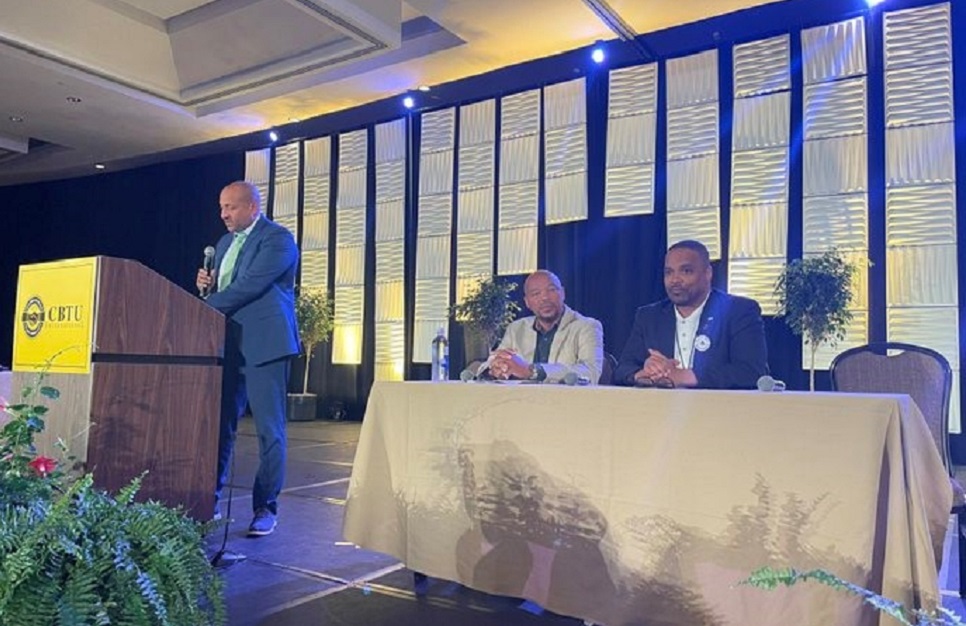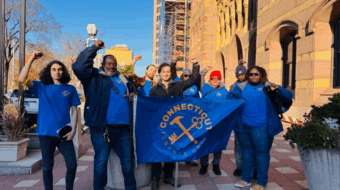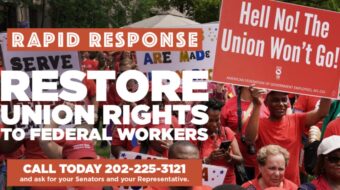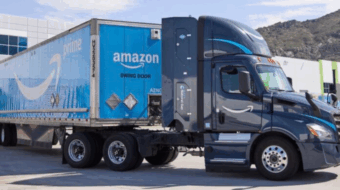
NEW ORLEANS —With the nature of work changing, organizing is changing, too, panels of organizers told the recent Conference of Black Trade Unionists.
That change includes organizing not just companies, but communities behind them, and moving out beyond unions’ traditional strongholds in central cities into the suburbs, they added in the late-May sessions.
“With community involvement, we can reach many, many more people” to convince them to support organizing drives, one panelist said during a discussion of organizing Delta Airlines. “And when community leaders come out” to support organizing, “then our politicians come out, too.
“It makes a difference.”
The organizers spoke at a time of rapid growth in organizing from coast-to-coast, with almost all of it starting at the grass-roots rather than top down. The largest current drive is the Starbucks campaign, initiated by baristas in Buffalo, N.Y., who organized four stores there in late 2021.
It’s spread to wins at more than 330 stores among more than 8,000 workers nationally. It’s also had to battle Starbucks bosses, headed by longtime former CEO Howard Schultz, still the firm’s biggest stockholder and a board member. The result: Almost 500 labor law-breaking complaints.
“These are outside-in campaigns” by workers at the Starbucks stores, one moderator said.
But that campaign, aided by Starbucks Workers United, which in turn the Service Employees sponsor, is not the sole drive going in the ongoing uprising of exploited, low-paid workers nationwide who, fed up with the corporate class’s greed feasting off their labor, have turned to unionizing as a top answer.
Those workers include the Starbucks workers, Amazon workers—in their own Amazon Labor Union or in spur-of-the-moment organized walkouts—warehouse workers, fast food workers, retail workers, adjunct professors, port truckers joining the Teamsters, and journalism workers joining the News Guild to protect themselves against rapacious hedge fund takeovers, among others.
Those organizing drives share other characteristics. Young workers, most of them workers of color, women, or both, lead them. Their objectives often go beyond wages and benefits to the work environment, with an emphasis on ending sexual and racial harassment and discrimination.
And while recruiting community support, they also often include community-oriented goals, such as more-affordable housing for college RAs, TAs, and grad student workers, yet another of the exploited groups. Those points came through at panels during the CBTU convention in New Orleans. And that community support is vital to success.
“Labor can organize communities, educate communities and invigorate communities, right on the spot” to succeed at workplaces, said Derek Figueres, who helped organize Sierra Club workers for the Progressive Workers Union, which also represents workers at Greenpeace and the Union of Concerned Scientists. “We have to coalesce to get out into the communities as much as possible.”
“We also need to think about exploitation, domestically and internationally,” added Angela Bradford, a Starbucks organizer and CBTU New Orleans chapter member.
“That’s been a different conversation because the U.S. has always been a dominant voice in the room” on labor issues—where the nation’s record is weak—environmental issues and exploitation of workers and resources in developing nations.
Yet those same workers can help the U.S. organizing drives through both solidarity and through standing up, with U.S. worker help, for their own rights, and for the environment, she said.
Still, another change, which the AFL-CIO has encouraged, is joint organizing drives by multiple unions focusing on one employer. One occurring now involves the Machinists, the Teamsters, and the Association of Flight Attendants-CWA at Delta Airlines. Delta, known for its bitter anti-union management, is non-union, except for its pilots.
Their drive’s goal: To organize the airline’s 25,000-plus flight attendants, thousands of mechanics (with IAM), and ramp and service workers. “It’s grass-roots right now,” said Edison Fraser of the Machinists. ”It’ll take all of us.” There are an estimated 19,000 workers in the other two groups.
But, ironically, in Delta’s home base, Atlanta, it’s viewed in the African-American community as “the de facto Black airline” because of the jobs it provides to that community. That makes garnering community backing tougher, one Delta organizer panelist said.
Community support is also important because airline and railroad organizers must function under the Railway Labor Act of 1925, not the National Labor Relations Act. And the RLA bans organizing individual worksites or workers at individual airports, for example.
Instead, unions must organize targeted groups of workers at the entire airline. That means, among other obstacles, getting union recognition election cards from 50%+1 of all workers involved.
They’re shooting for 65%-70%, Delta organizers said, to avoid the fiasco AFA suffered on a prior drive. It discovered fake and forged signatures among its cards and had to stop the campaign when removing those names plunged it below 50%.
To encourage the workers, panelists said Delta organizing is concentrating on workers at its hubs: Atlanta, Detroit, Boston, Minneapolis-St. Paul, St. Louis, and Orlando. They appealed to anyone flying Delta “to have our backs” when boarding planes, and show support for the workers. There’s more information about the joint drive at www.deltacampaign.com.
We hope you appreciated this article. At People’s World, we believe news and information should be free and accessible to all, but we need your help. Our journalism is free of corporate influence and paywalls because we are totally reader-supported. Only you, our readers and supporters, make this possible. If you enjoy reading People’s World and the stories we bring you, please support our work by donating or becoming a monthly sustainer today. Thank you!










